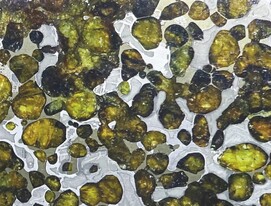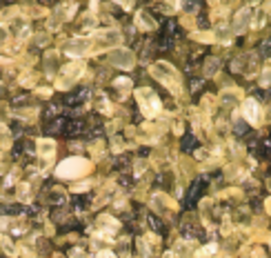Galaxy of Green
Olivine occurs across the galaxy, from Earth to extraterrestrial bodies including the Moon, Mars, and asteroids, to particles of comet dust and distant debris disks. The mineral is critical to our understanding of early Solar System chronology, planetary formation processes (e.g., magma ocean solidification), crustal evolution (e.g., volcanic eruptions), and surface weathering. Olivine’s ability to shed light on these processes lies in the linkage of small, physical samples and satellite-derived data. Laboratory spectra become the basis for olivine detection and compositional interpretation in remotely sensed spectra ranging from high-resolution planetary maps to single extra-solar datapoints. In turn, petrologic studies of olivine underpin the geologic interpretations of these spectral datasets. Finally, olivine chemistry records Solar System formation conditions and relative chronology. Olivine is our bridge across time and space.



